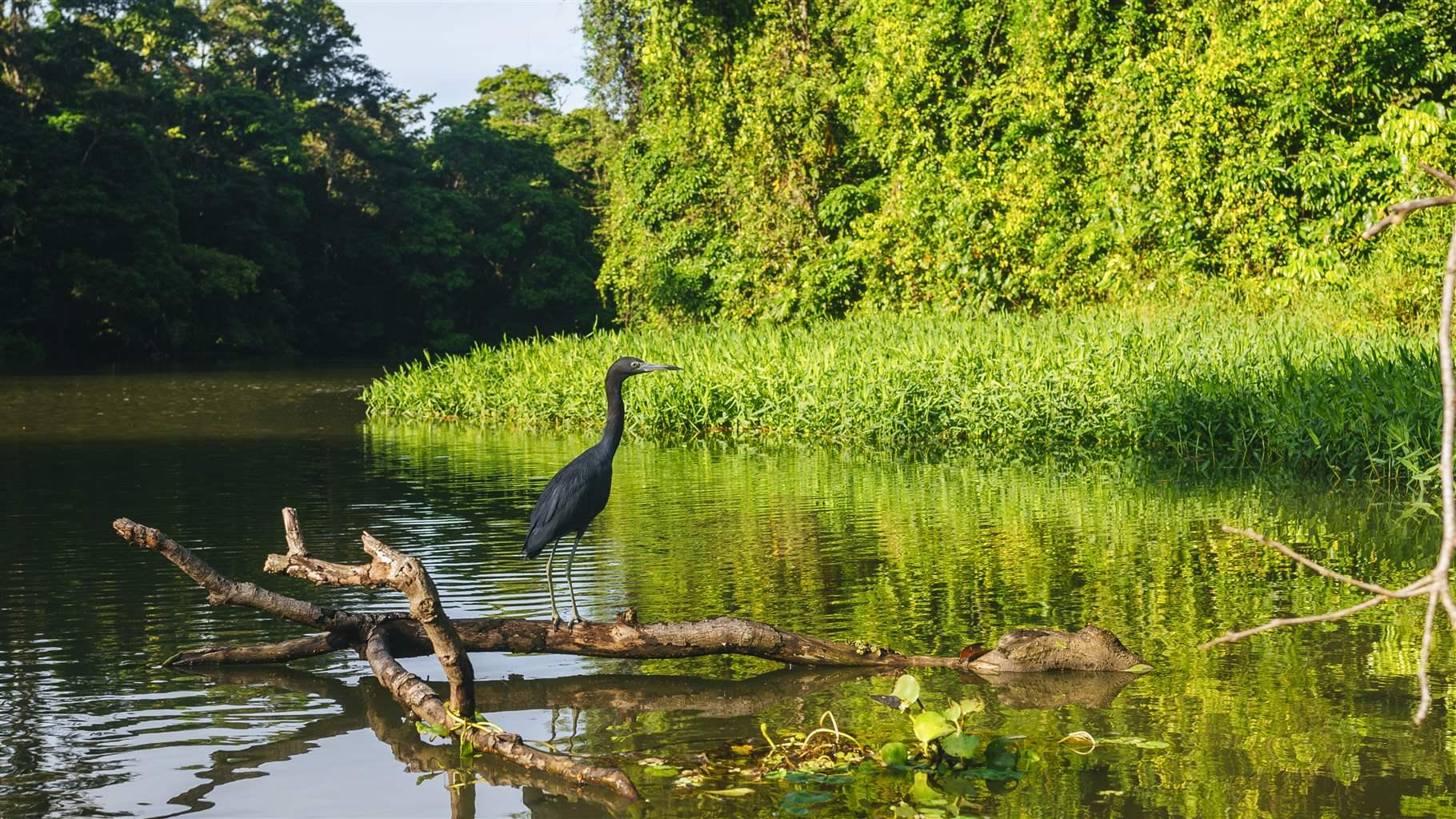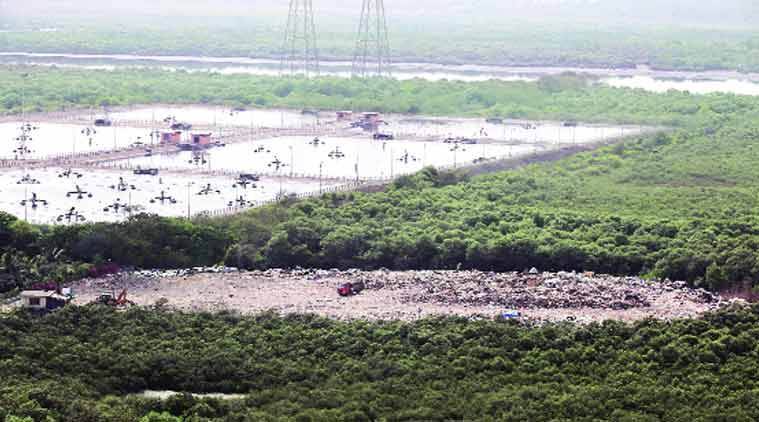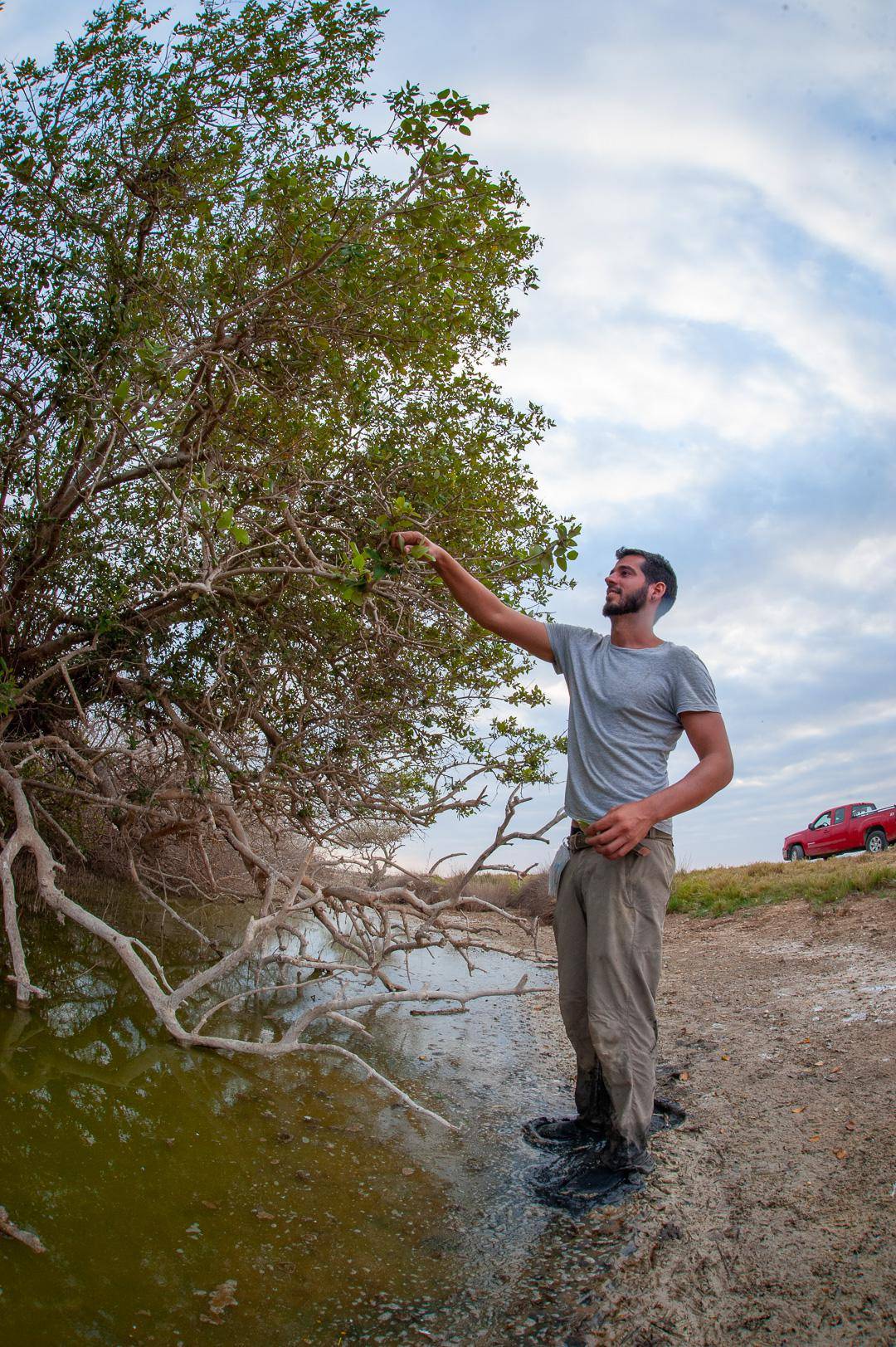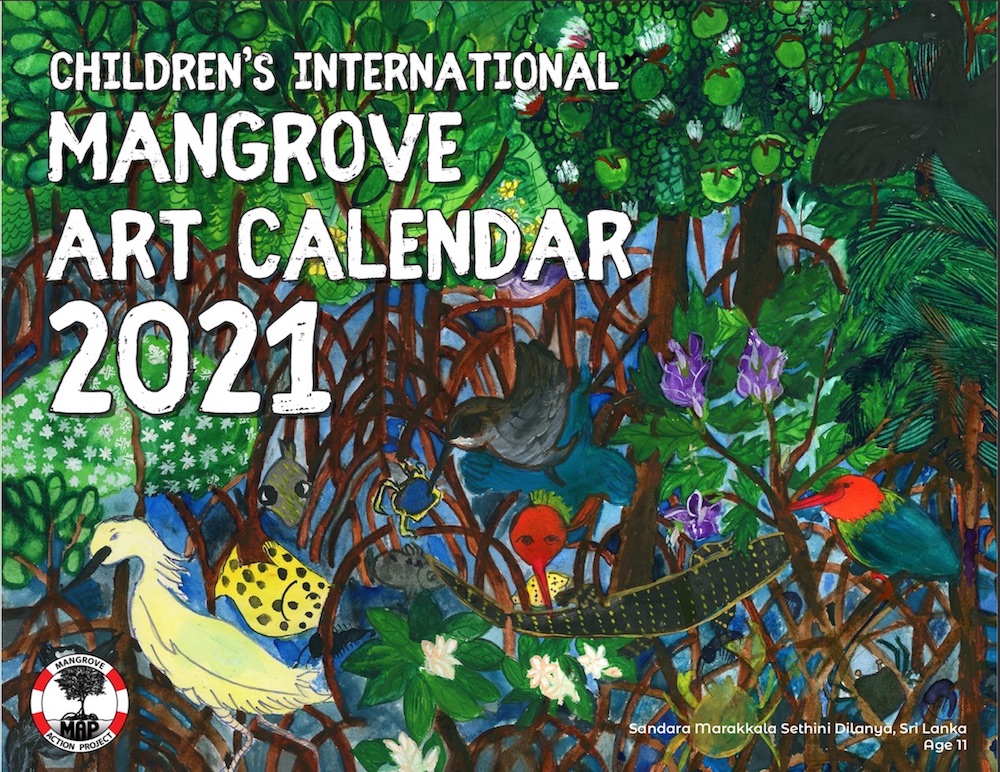Cayman Islands Mangrove Rangers Mangrove Discovery Camp Great Success

CAYMAN ISLANDS – The Cayman Islands Mangrove Rangers launched its first Mangrove Discovery Camp in celebration of World Wetlands Day (February 2nd). The two day camp involved a series of fun hands-on activities based on the Marvelous Mangroves curriculum which has been taught in all Cayman schools for over 20 years. “The activities lead to a deeper understanding of mangrove ecosystems and the threats that they face,” explained Ranger founder Martin Keeley. During the afternoon of the second day the 20 attendees took a discovery tour of the famous Central Mangroves – at 8,500 acres the largest contiguous wetland in the Caribbean. The field trip was conducted by Sea Elements, partner in the camp. Unfortunately, the weather was too rough for the kayaks, however Mike Nelson of Sea Elements captained his launch which is specially designed for educational trips. The trip ended up with attendees checking out the starfish at Starfish Point. Rangers Daniella Christian, Dinara Perera, Javahn Syms and Kayla Young joined rangers’ co-founder Martin Keeley in running the camp which covered everything from salinity experiments to ecosystems, food chains and webs, microscopic identification and analysis of micro-organisms, to human impacts on mangroves. The activities were held at the International College of the Cayman Islands (ICCI) which generously donated the classroom facilities. READ MORE AFRICA New Partnership for Mangrove Restoration

MOZAMBIQUE – he Mozambican National Institute of Fisheries Research (IIP) and the Eden Association for Reforestation signed a Memorandum of Understanding (MoU), under which the two sides agreed to work together in a mangrove restoration drive along the Mozambican coastline. The country has designed a national strategy for mangrove restoration which seeks to restore up to 5,000 hectares of mangrove forest by the year 2022. Under the existing partnership 777 hectares have been restored in Maputo, with 330 others to replant. As result of the success in Maputo, the Eden Association, with wide-ranging experience in mangrove restoration, has been trusted with the responsibility to intervene in the southern province of Inhambane, and in the Bank of Sofala, as well as other areas envisaged under the association’s plan. The director of the IIP, Jorge Mafuca, said the aim is to work for the restoration of mangrove areas in the framework of the national strategy approved in 2020 by the Mozambican government. “Under this partnership, the two sides will move on to the Bank of Sofala as one of the areas with critical cases of mangrove destruction, not only because of the frequent natural disasters that have hit the region, but also because of human action,” Mafuca said. READ MORE AMERICAS Costa Rica Puts Mangrove Protections at Heart of Paris Climate Commitments

COSTA RICA – Mangroves help in the fight against climate change, as well as provide nursery and foraging grounds for many species, including birds such as this heron in Tortuguero, Costa Rica, and protect communities from storms and natural disasters. Costa Rica is one of several countries including these coastal wetlands at the heart of their commitment to the Paris Agreement. Costa Rica has a proud history of protecting its natural heritage. With more than a quarter of Costa Rica’s lands designated as national parks, an energy grid that runs on 100% renewable energy most days of the year, and a national plan to achieve net zero carbon emissions by 2050, the country has placed environmental stewardship at the core of its national identity. Underpinning this effort has been innovative planning and financing for conservation, including the country’s payment for ecosystem service (PES) program. For the past 20 years, under the PES model, the government has compensated farmers for conserving forests on their lands, thereby monetizing the valuable ecosystem services the forests provide, such as storing carbon, supporting biodiversity, and protecting communities against flooding or landslides. READ MORE In St Thomas, Kayaking Through the Mangroves

VIRGIN ISLANDS – You always have that feeling of joy,” Sybille Sorrentino says, gazing at the wall of green just across the water. “It’s a three-by-two-mile sanctuary.” We’re at Virgin Islands Eco Tours, set on the southeastern coast of the island of St Thomas, an operation that has been running kayak tours for 25 years. And from the moment you turn off Route 32, you feel it, too. Paddle a minute or two off the dock and you’ve entered the frontier; you’re no longer in St Thomas — or so it seems. This is the Mangrove Lagoon, and it’s one of the most spectacular settings in the Virgin Islands, a breathtaking natural gallery of mangroves and tiny cays abutting the ocean’s edge. And what’s wonderful how accessible it is, equally enjoyable for the novice just off Highway 32 and the advanced kayaker. READ MORE ASIA As threats increase, community’s efforts to save Pulicat lake continues

INDIA – Meerasa’s story is one of displacement. The son of a boat maker and a resident of Dhonirevu (Karimanal island), one of many villages around the Pulicat lake, Meerasa and his parents were evicted from their home in 1985 during ISRO’s Sriharikota expansion. Meerasa now lives in Jameelabad and has worked in conservation since he graduated from school. But with industrial expansion around Pulicat lake threatening the land and the mangrove forests that surround them, Meerasa fears that history might be repeating itself. About 50 km north of Chennai, Tamil Nadu, is Pulicat lake, the second largest brackish water ecosystem in India. Known as Pazhaverkadu, meaning “forest of the rooted fruit”, Pulicat lake was once covered by dense mangrove trees. But over the centuries — from mangroves being hacked for the construction of the Dutch fort in the 1600s, to the gradual clearing of forests owing to spreading urbanisation and industrial expansion — the mangroves of Pulicat have now been reduced to sporadic patches along the coast. And the mangrove destruction for industrial expansions have both severely affected biodiversity and endangered the livelihood of the fisherfolk who depend on the mangrove ecosystem. READ MORE World Wetlands Day: Construction equals destruction

INDIA – Last week India marked the World Wetlands Day with the usual pledges of protecting these crucial ecosystems safe and regenerate them. The ground reality, however, is sharply different as India leads the world in loss of wetlands, with disastrous consequences for its biodiversity. Mumbai Coastal Road and the Mumbai-Ahmedabad bullet train. Two of the most high-profile and highly controversial projects in Mumbai have one thing in common, besides extra-large budgets. Both pose severe threat to the bustling metropolis’ once thriving wetlands, which are now facing an existential crisis. The INR 1.1 trillion 508 km bullet train route linking Mumbai to Ahmedabad is likely to destroy or at least seriously impact 55,000 mangroves, the most common wetlands found in and around Mumbai. Large chunks of mangroves would be filled up for building two important railway stations, one, the terminal building in Bandra Kurla complex and the other is the Thane railway station. Even though the Maharashtra government says it is trying to reduce the impact on mangroves by realigning designs of the Thane station, the overall impact on mangroves is likely to be catastrophic, as several environmental activists have already cautioned. READ MORE Preserving Indonesia’s Mangroves Crucial for Climate Change Mitigation

INDONESIA – Indonesia, which is home to one of the world’s largest mangrove forests, has set a target of rehabilitating 150,000 hectares (ha) of its area under mangroves in 2021. Based on data recorded in 2011, about three million hectares of mangrove forests can be found along 95,000 kilometers of Indonesia’s coastal areas, constituting 23 percent of the world’s mangrove ecosystem. Papua, Kalimantan, and Sumatra Islands are considered the most crucial regional mangrove ecosystems. This year’s ambitious mangrove rehabilitation program, which will be carried out particularly in critical and tsunami-prone areas, was announced by Coordinating Maritime Affairs and Investment Minister, Luhut Binsar Pandjaitan, during a recent coordination meeting held to discuss the accelerated program. READ MORE What ails Muthupet mangroves?

INDIA – Range Forest Officer A Thaheer Ali says there are multiple factors for the degradation of mangroves in the area, major ones being hypersalinity and siltation. Mangroves are salt-tolerant species and they depend on a delicate balance of fresh and seawater, and are often referred to as tidal forests. “Generally, Muthupet gets fresh water for six months, from July to December. This year, due to the extended north-east monsoon, there was flow until the second week of January. It is during the summer that the tidal water stagnates and its evaporation occurs, leading to hypersaline condition smothering the low-salt tolerant mangrove species, especially the young ones,” he said. Additionally, the six distributaries of Cauvery river – Nasuviniar, Pattuvanachiar, Paminiyar, Koraiyar, Kilaithangiar, and Marakkakoraiyar – that flush fresh water into Muthupet have silted-up. READ MORE New study to help scientists understand how mangroves thrive in desert climate

UAE – Now available to scientists across the globe, the findings will be key to understanding how these mangroves are able to thrive in the UAE, despite harsh weather conditions. The research group led by the NYU Abu Dhabi’s (NYUAD) Centre for Genomics and Systems Biology (CGSB) published the high-resolution genome for the grey mangrove (Avicennia marina) in the journal G3: Genes|Genomes|Genetics. The grey mangrove, a pan-tropical species, has a distribution that extends from New Zealand to the Arabian Gulf. As an important ‘ecosystem engineering’ species that provides habitat for many other species and protects coastlines from erosion and storm surges, there has been growing research across the globe on how these mangroves might cope with the repercussions of climate change. “The grey mangrove is the most widely distributed mangrove species in the world, and it is the only natural evergreen forest here in Abu Dhabi and across the Arabian Peninsula. This is the first highly detailed reconstruction of the genome for this mangrove, a species that is incredibly important both locally and across the tropics,” said John Burt, associate professor of biology at NYUAD and project lead. READ MORE Activist warns of mangrove destruction on CIDCO land

INDIA – Mangroves are being destroyed with impunity on CIDCO land at Taloja, a city-based environmentalist has alleged, insisting continued environmental violations in areas under the jurisdiction of the development body. At Taloja Phata, a kilometre-long road has been made deep into the mangroves, according to Stalin D, who has written to the Mangroves Cell of the forest department seeking concrete action. Stalin said the flow of tidal water has been blocked to the mangroves resulting in the death of many of the well-entrenched trees. He has shared GPS-tagged photos with the Cell to back his claims. “Despite clear instructions from the Mangroves Protection Committee and the Wetlands Grievance Redressal Committee directing project proponents to display boards at the sites explaining details of the work undertaken, nothing is done. Now this will be another case which will go into the records with no restoration or action taken,” reads Stalin’s letter, a copy which is with this newspaper. READ MORE LAST WORD Dear Mangrove Action Project Team, Greetings from Godrej, India. Godrej has been scientifically managing large tract of mangrove ecosystem in Mumbai city on three-pronged strategy of Research, Conservation and Awareness. The ISO 14001 certified forest hosts 16 true mangrove and mangrove associate species along with 208 bird, 82 butterfly, 81 spider, 75 insect, 31 reptile, 13 crab and 6 mammal species. Our dedicated ‘Wetland Management Department’ sensitizes 6000-8000 citizens through nature trails and several thousand more citizens through various educational resources (presentation, posters, species identification keys, story book etc.) on diversity, importance and conservation of the mangrove ecosystem through free, downloadable resources on our website. One of the key challenges in mangrove conservation is correct identification of mangrove species and inadequate understanding of the ecosystem. To resolve this challenge, and to help researchers, teachers, students, NGOs, Government agencies, nature enthusiasts, Godrej has developed a unique Mangroves mobile app. This visual and informative app describes 67 true mangrove and associate species in 11 Indian languages, including English. Users can identify mangrove species with leaf shape, flower color, scientific/common name, and location (locations are within India as of now). The app once downloaded, does not require internet connectivity, making it easy to use in field. Godrej’s mangrove app is available in Android and iOs platform here It has been downloaded in 67 countries so far, receiving appreciation and suggestions alike. The app can be easily identified with its logo of flamingo bird surrounded by mangrove leaves, crab, fish etc. May I request you to download the app and popularise in the mangrove conservation stakeholders of your country/countries you have access to? Please feel free to send your comments, suggestions using ‘Feedback’ section of the App. With your assistance, we hope more researchers, teachers, students, NGOs, Government agencies, nature enthusiasts etc will download the Mangroves app and understand the ecosystem for its conservation. Thanks and Regards Laxmikant Deshpande Godrej Construction | Godrej & Boyce Mfg. Co. Ltd. | Plant 25, Pirojshanagar,Vikhroli, Mumbai-400079, Maharashtra, India
Tel: +91-22-67961097 | Mob: +91-9167344890, www.mangroves.godrej.com Like this newsletter?
Pease consider donating to MAP to keep it going.
Giving could never be easier  | 2021
CHILDREN’S ART CALENDAR BUY YOURS!

ACTION ALERTS Lawsuit Against Genetically Engineered Tree Solidarity Group – SIGN PETITION Tell the Japan International Cooperation Agency not to fund polluting coal – TAKE ACTION Please SIGN: keep plantations out of orangutan habitat!
TAKE ACTIONUnilever: stop destroying mangroves for convenience food! SIGN OUR PETITION
Stop plundering the oceans for industrial aquaculture! SIGN THE PETITION
Like this newsletter? Pease consider donating to MAP to keep it going. Giving could never be easier
Please see our newest video: “Restoring The Natural Mangrove Forest”
WATCH VIDEO 
Restoring The Natural Mangrove Forest
Watch movie 
Community Based Ecological Mangrove Restoration in Rufiji Delta VIEW VIDEO Video: Mangroves for the Future – A look bacK. As the latest phase of Mangroves for the Future (MFF) draws to a close, this video highlights some of the project’s most successful initiatives – from local women supporting national park management in Viet Nam to an island in the Maldives that has become a model for waste management, and everything in between. View Here WANT TO GET INVOLVED?
Follow and Join MAP!    
Like this newsletter? Pease consider donating to MAP to keep it going. Giving could never be easier 

Singing for the Sundarbans WATCH HERE Entrevista con Monica Quarto del Mangrove Action Project (Spanish language) Oye Aqui
VOLUNTEER OPPORTUNITY 
MANGROVE ISSUES Want to learn more about mangroves?
Our short presentation will give you a better understanding of the issues we are working to solve. WATCH PRESENTATION What is CBEMR? Download MAP’s 2 page CBEMR Information Sheet containing links to all MAP’s CBEMR resources – CLICK HERE
View MAP’s uploaded Videos at
MAP Video Gallery Question Your Shrimp Consumer/Markets Campaign!
WATCH VIDEO Mangroves: Guidebook to Malaysia – Click Here SHARE MAP’S VISION
CLICK HERE to watch short introductory video. Together we can work “at the roots of the sea”. Our short documentary, Reducing the Risk of Disaster through Nature-Based Solutions : Mangroves

Marvellous Mangroves Curriculum The Marvellous Mangroves Curriculum begins with a simple philosophy – getting future generations to not only learn about, but understand the importance of mangrove forests. VISIT 
The award-winning Marvellous Mangroves (MM) curriculum educates children on the importance of mangroves and their ecological functions, teaching them about modern challenges and mechanisms for sustainability. VIEW VIDEO Marvellous Mangroves Curriculum in Bangladesh – WATCH VIDEO
MARVELLOUS MANGROVES IN BRAZIL
En Portuges 
Marvellous Mangroves – A Curriculum-Based Teachers Guide.
Like this newsletter? Pease consider donating to MAP to keep it going. Giving could never be easier 
“Question Your Shrimp” Campaign Question Your Shrimp – is it really sustainable? Sign the Petition
Note to Our Readers: We strive to keep active links in our newsletter. However, due to circumstances beyond our control, occasionally links to stories may become broken. If you find a link to a story is not functioning, please cut and paste the headline into your browser search bar. In most cases you should be able to locate the original story.
Not yet a MAP News subscriber?
Click here to subscribe. 
|


























